The Huawei P8 Review
by Andrei Frumusanu on June 4, 2015 8:00 AM EST- Posted in
- Smartphones
- Huawei
- Mobile
- P8
- Kirin 930
GPU Performance
On the GPU side, HiSilicon continues to rely on what is by now a quite old IP in the form of the ARM Mali T628. This is the same MP4 GPU configuration found in the Hi3630 (Krins 920's) of last year, and saw little change other than a small 80MHz boost in clocks to 680MHz. The Honor 6 and Mate 7 already disappointed in GPU performance, and we're not expecting the P8 to have any large gains over those predecessors.
We start off with 3DMark 1.2 Unlimited, which has both a graphics heavy test as well as a combined GPU and CPU heavy test.
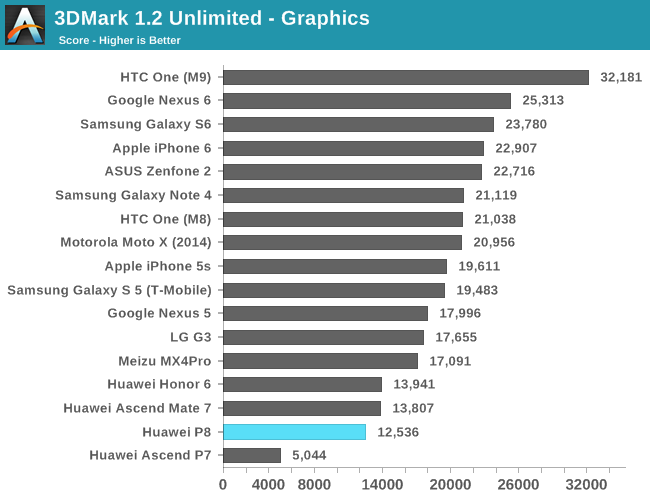
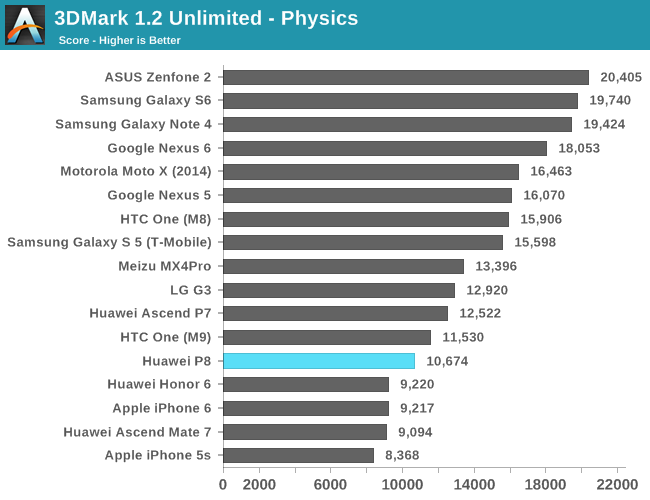
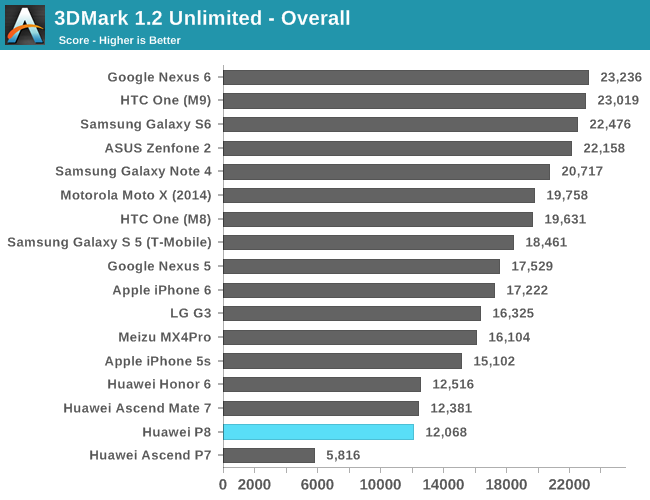
The P8 performs as expected, as it struggles to keep up with the competition. Interestingly, it performs worse than the Kirin 920 even though it's clocked higher than its counter-part, pointing out that the weaker CPU actually might be limiting the graphics performance.
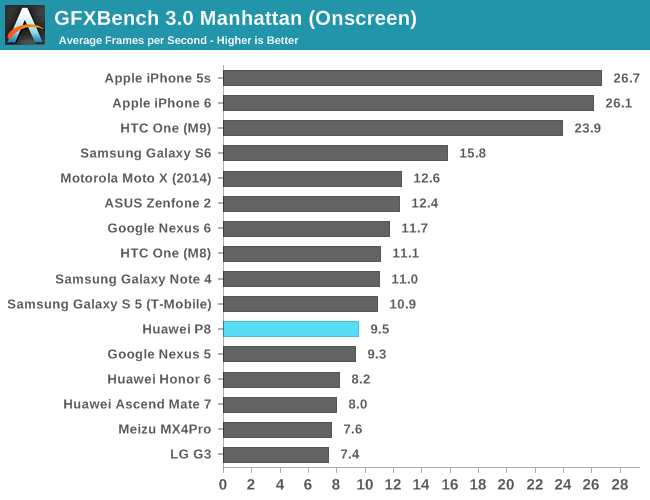
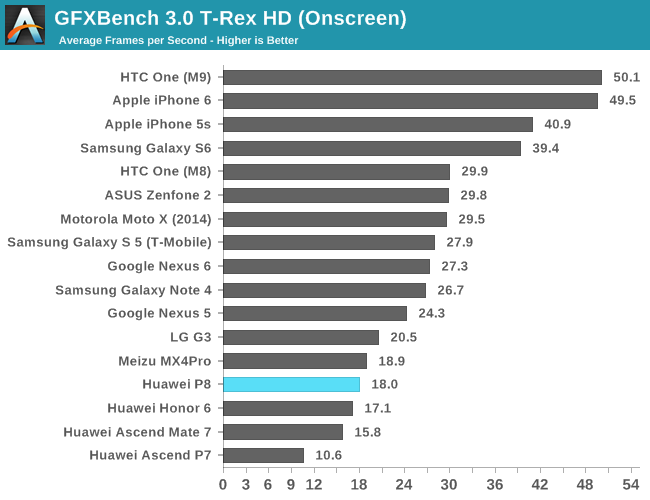
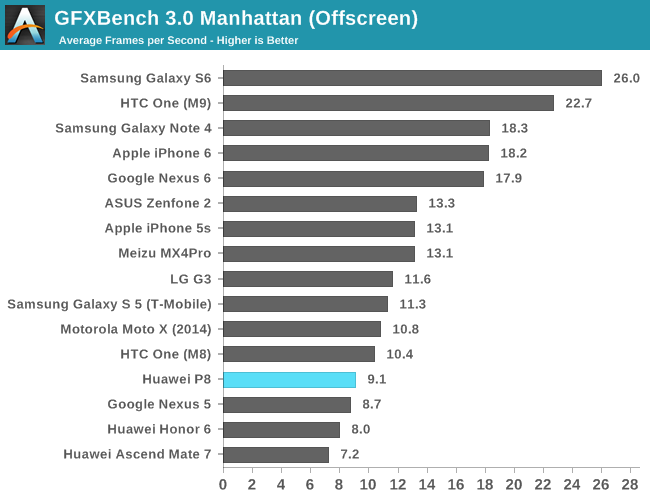

GFXBench is a more CPU-light benchmark and we see the P8 correctly outperform the Honor 6 & Mate 7 as one would expect it to. Again, we see very bad performance for a 2015 flagship as the P8 still can't match up to devices released 18 months ago.
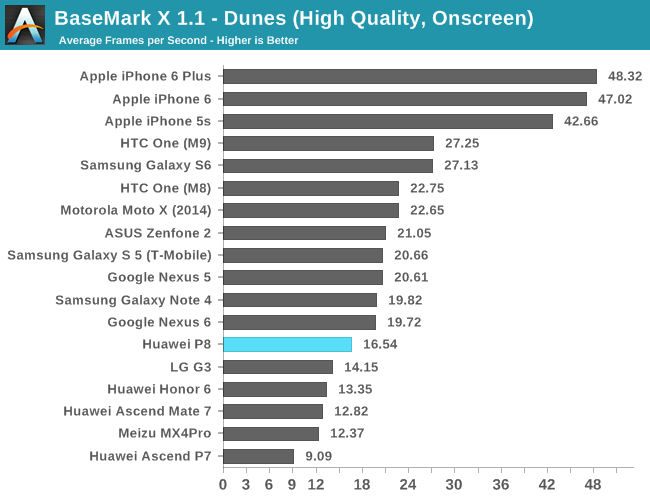
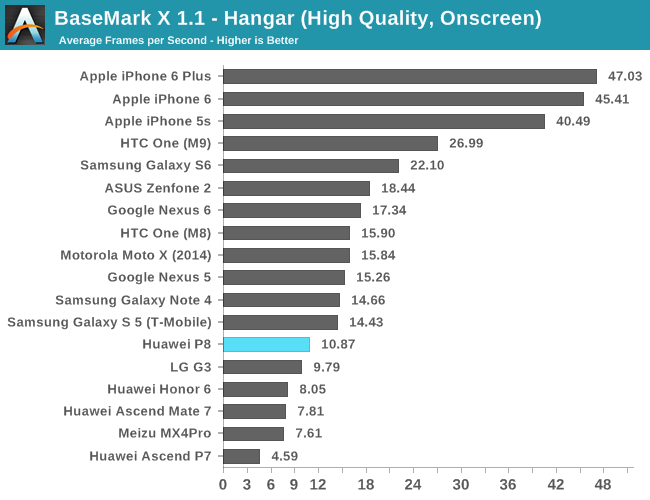

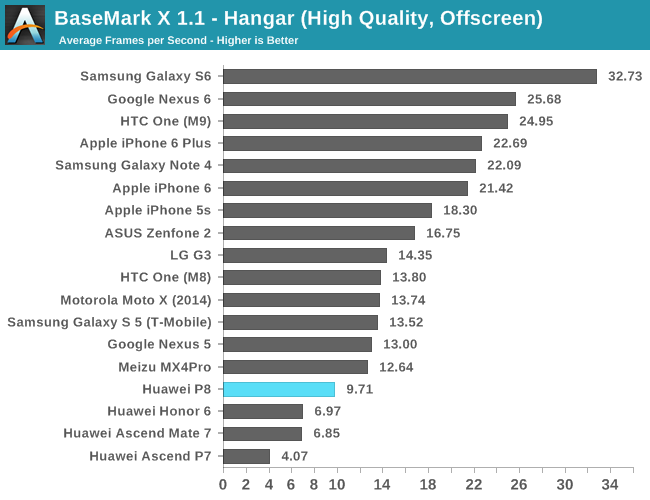
BaseMark X paints a similar picture as GFXBench. There's not much we can say to make the scores seem better for the P8, as the GPU remains very underwhelming.
GPU Power
While I mentioned in the introduction that I wasn't able to properly dismantle the P8 without damaging it, I did try to get some numbers through the internal fuel-gauge. While these numbers are definitely not as precise as measuring directly on the hardware and should be taken with a grain of salt, they nevertheless give us a good reference point and estimate on how the SoC fares.
The P8 seems to consume around 3.7W of load power in the T-Rex Offscreen test. As a reminder, under the load power metric we understand the resulting difference of the total power of the device subtracted by the average power the device consumes in its idle state. This is done to be able to compensate for the various screen sizes and their efficiency, and to cancel out power other eventual passive platform components.
3.7W is still sadly too high from what a smartphone SoC should be allowed to dissipate in normal conditions and will lead to unavoidable thermal throttling as we see in the battery rundown log:
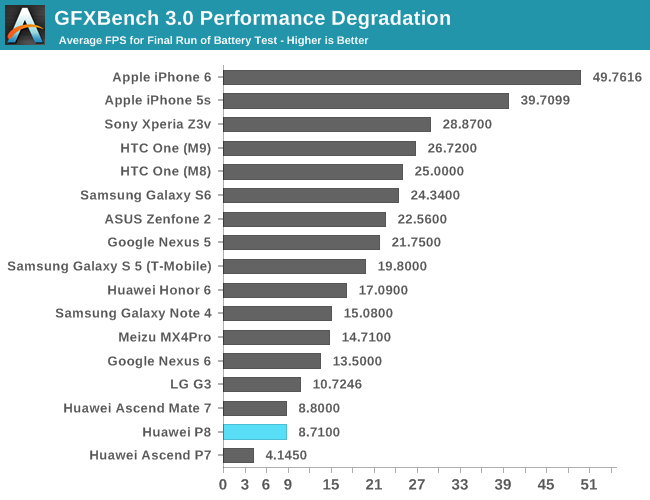
The P8 doesn't even manage to keep its top frequency for more than a single run, and after 7 minutes it settles down and between 50% and 40% of maximum frequency. The end performance degradation value comes in at 8.71fps, a result ironically beat only by last year's Ascend P7's and the Kirin 910T.
| T-Rex Offscreen Power Efficiency (Load Power) | ||||||
| Mfc. Process |
FPS | Avg. Power | Perf/W | |||
| Exynos 7420 (S6) | 14LPE | 56.3 | 4.82W | 11.63 fps/W | ||
| MT6595 (MX4) | 28HPM | 23.3 | 2.42W | 9.55 fps/W | ||
| Exynos 5430 (MX4Pro) | 20LPE | 28.7 | 3.55W | 8.08 fps/W | ||
| Exynos 5433 (Note 4) | 20LPE | 37.3 | 5.35W | 6.97 fps/W | ||
| Exynos 5430 (Alpha) | 20LPE | 31.3 | 4.88W | 6.41 fps/W | ||
| Kirin 930 (P8 Estimated) | 28HPM | 17.0 | 3.69W | 4.60 fps/W | ||
When looking at SoC power efficiency under 3D load that we've tested over the last few months we see that the Kirin 930 ends up in quite a dire situation as it gets beat by all other SoCs we currently have data on.
HiSilicon needs to invest in more silicon area and adopt higher GPU core numbers to be able to run at lower frequencies and lower voltages if it wants to stay competitive in graphics performance. It's weird to see the stark contrast of HiSilicon's current 28nm 4-core silicon versus Samsung's 14nm 8-core in the Galaxy S6, with both devices coming out in the same time-frame and both of them essentially employing the same GPU IP family.
It will be interesting to see how Huawei can take advantage of the next generation manufacturing processes as future Kirin SoCs are expected to be made in TSMC's 16nm FinFET node.



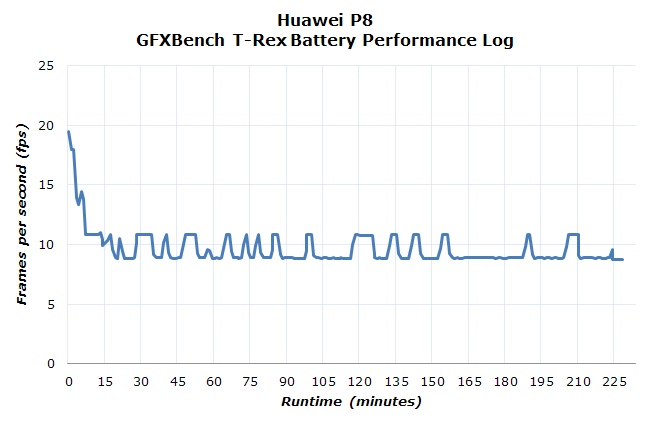








104 Comments
View All Comments
Taneli - Thursday, June 4, 2015 - link
Another iPhone clone from Asianiva - Thursday, June 4, 2015 - link
How is this thing an iPhone clone?der - Thursday, June 4, 2015 - link
Design Profile, Camera UI, yada yada yadaEthos Evoss - Friday, June 12, 2015 - link
another asholeshaolin95 - Tuesday, September 15, 2015 - link
bingo! lol Taneli you are such a loserrandom2 - Sunday, June 7, 2015 - link
All phones are iPhone clones. Don't you know anything? :)Ammaross - Monday, June 8, 2015 - link
At least that's what Apple's lawsuits have claimed....Ethos Evoss - Friday, June 12, 2015 - link
nothingEthos Evoss - Friday, June 12, 2015 - link
no iphone copied sony ...http://www.dailytech.com/Samsung+Apples+iPhone+Sta...Refuge - Friday, June 12, 2015 - link
it is also a rectangle? Didn't they have a patent on that at one time? lol